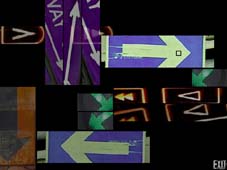
Zakiah Omar ->work, -> bio, -> web
Hanno Baethe ->work, -> bio, -> web
STRETCHING IT WIDER
a nonlinear, interactive portrait of the poet John Giorno
a work in progress by
Zakiah Omar, Hanno Baethe and Thomas Marquard
Some things
that work
in one decade
don't work
in another
so mark them down
as a noble idea
that failed

Like few other artists, the New York poet John Giorno has exposed himself to the currents of life, art, and politics of our time. In his first book "The American Book of the Dead" (1964), he innovated Found Poetry by applying the ideas of the visual Pop Artists to writing. "In 1965 the idea occured to me that a poet can connect to an audience using all the entertainments of ordinary life: watching TV, listening to albums, and hearing on the telephone." In 1968 he created Dial-A-Poem, innovating the use of the telephone in mass communications. Its success gave rise to the Dial-A-Something industry.
Just say NO
to family values,
and don't quit
your day job!
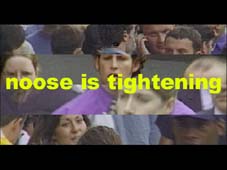
Where does John Giorno's poetry start? In Pop Art, or in the city of New York, in his search for wisdom, or in his relations with fellow artists? Where does his genius reveal itself best? As stage performer, or as producer, as a public gay figure, or as a political activist, as originator, or practitioner? What are his main concerns these days? Making poem prints, or writing memoire texts, working on the AIDS Treatment Project, or hosting Buddhist events? As all these aspects influence and contain each other like the parts of a hologram, John Giorno is his best cross referance.
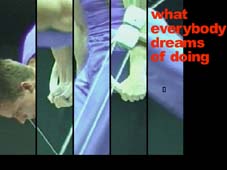
A nonlinear interactive portrait reflects his firm belief that wisdom arises spontaneously, unexpectedly at its own time, and yet any phenomena is impermanent, and of an empty nature. It is appropriate in experiencing both the rhythm of his language and the complexity of his extraordinary mind. It also supports the notion that John Giorno throughout his career investigated the possibilities of respectively new media, his philosophy and carries it into the current wave of new media and web culture. A 'net-aware' production would allow one to move between the local CD-ROM and related web sites adding another dimension.
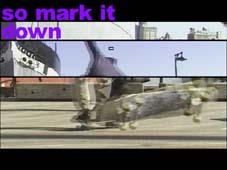
The many facets of John Giorno should be connected as spontaneously and randomly as life itself. The experience should be a very individualistic and personal perception of John Giorno in his past and present environments. The beginning could be one of a number of beginnings, and the passage through time and space not predetermined. Through a network of spoken and written texts, moving and still images, and layers of sound, one can be a viewer, a listener, or a reader, or combinations of these by choice. Randomly generated paths add unexpectedness to the experience. The use of popular iconography and found material - ideas that had inspired the Pop Art and Found Poetry movements - will be one of the fundamental aspects of our work.
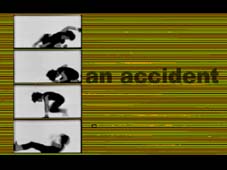
This work-in-progress is a visualisation of one of Giorno's works, 'Stretching It Wider', which will be incorporated into the portrait. The poem is divided into 12 parts. The active viewer can choose to start with the first part or jump in at any point, and thereafter, move forwards or backwards using the navigation panel, or non-sequentially by returning to the main navigation screen. Interaction with John Giorno's voice, atmospheric sound and sound collages, video cut-outs, and graphics, allows the active viewer to choose what and how he wishes to experience John Giorno's poem.
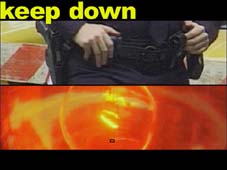
Biographies:
Born in Kuala Lumpur / Malaysia. Studied building and architecture, University of New South Wales, Sydney, Australia. Freelance writer for various publications, mostly in Malaysia. Based in Berlin, Germany, since 1991 as frelance writer, video-maker and multimedia project developer. Currently doing an MA Design in Interactive Media at the Centre for Electronic Arts, Middlesex University, UK.
Independent videomaker since 1983. Experimental videos and documentaries, many of which have been screened internationally. Most of the works have received awards, among them "Sehnsucht nach Sodom" which won the Adolf Grimme Prize in 1989, the most prestigious German television award, and the Grand Prix at the Cinema du Reel, Centre Georges Pompidou, Paris. Since 1992, Professor in the Communications Department, Hanover College of Design and Media.